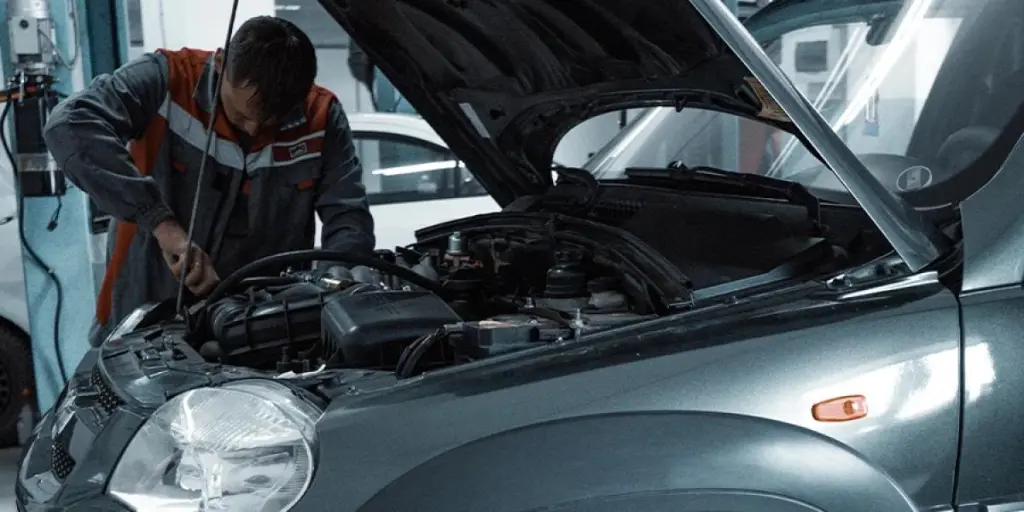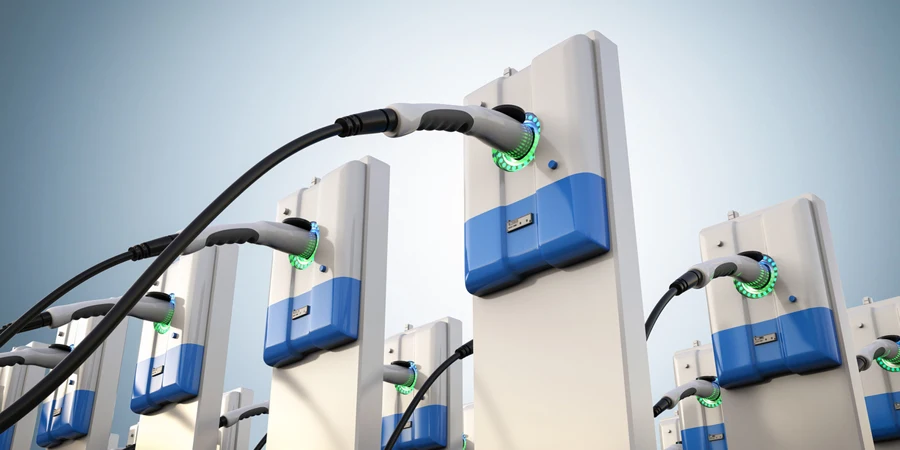With the growing demand for modern cars, particularly commercial vehicles, the car jack market is estimated to expand exponentially in the coming years. In fact, estimates suggest that the global automotive jacks market is predicted to scale to US$ 12.01 billion at a compound annual growth rate (CAGR) of 6% until 2026.
This article explores the top floor jacks available in the market today, as well as important features to look out for when selecting a floor jack.
Table of Contents
What is a floor jack
How to lubricate and use a jack
Different kinds of floor jacks
What to look for in a floor jack
Conclusion
What is a floor jack
Car jacks are devices designed for lifting vehicles, giving operators access to the base frame of a car for maintenance and repair or possible mechanical work on the car. Floor jacks are reliable for jacking out a car stuck on mud, sand, or snow. It is generally recognized as the go-to device for changing motor parts or fixing a flat tire. These devices are strategically mounted at safe lift positions underneath a car, such that they cling to the vehicle’s frame, giving it the perfect balance for the gradual lifting of the vehicle.
The chassis or base framework of a car can only be accessed securely with the aid of a floor jack, and these lower regions of a vehicle are where certain key components of a vehicle are located, like the brakes, wheels, and suspensions. This is why a jack is a must-have for every car user.
How do floor jacks work
Floor jacks are usually placed at the bottom of a vehicle, where the shaft is made to maintain a horizontal posture, and as the handler applies pressure (through an up-and-down motion), the shaft pushes on a crank that is linked to a lifting pad, raising the car vertically.
For hydraulic jacks, fluid is poured inside the container which is evenly distributed to the different channels in the device, while pressure is applied. This phenomenon is known as Pascal’s principle. The hydraulic jack’s key components include hydraulic oil/fluid, cylinders, and a pumping system.
How to lubricate and use a jack
Understanding the jack
Before lubricating a jack, be sure to understand the nature of the jack. There are different kinds of jacks. However, some of the more common ones include side mount jacks, swivel tongue jack, and electric jacks. A typical jack should have a large screw with a nut that triggers the up-and-down motion of the cylinder. And as the handle is moved at a right angle, the jack height increases.
Select the best lubrication
For a smooth movement of metals and optimal function of the jack, the metals must be greased and lubricated properly. But before moving ahead to lubricate the device, be sure to select the right lubricant. Examples of highly effective and sensible jack grease are:
- White lithium grease: this petroleum-based grease has multiple functions, and is proven to be one of the high-performance greases.
- Graphite-based grease: this is a reliable option for stopping dust congestion in the machine—they are designed to block dust and grime.
- Motor oil is also found to be an effective lubricant for jacks.
Take out the handle
To properly grease a tongue jack, the handle must be removed, but be sure to relieve the device of any form of load. The handle can be removed using wrenches, or by loosening the bolts and inner screws. After detaching the handle and bolt, separate the external tube from the internal tube.
Take out the screw
The external tube’s bearing should be removed, the bearing usually covers a washer and ball bearing which is located at the top of the inner screw. Be sure to remove them all. Then, take out the handle to enable the screw inside the inner tube to detach easily.
Wash the screw
Free the screw of rust, grime, or dust deposits. Then go ahead and apply grease or lube to the inner screw, and ensure the grease or oil is sufficiently applied. Fix back the screws when done.
Reassemble the jack
Ensure you assemble the components back together, following the same step, but this time in reverse. This includes the bearings, bolts, washer, etc. Note that the handle can be reinstalled with wrenches.
Different kinds of floor jacks
3 ton car hydraulic floor jack
A 3 ton hydraulic floor jack with high strength steel capacity, designed to lift 60 to 70% of a car or trunk weight, with little or minimum effort, without damaging the vehicle. The floor jack offers optimum stability when positioned underneath a car. It is one of the most affordable and durable car jack options available in the market.
Features
- Fast lifting
- 3 ton capacity
- Single pump
- High quality jack with high strength steel
- Heavy duty blow case
Pros
- It’s reliable to operate
- Makes use of hydraulic pressure
- Offers easy positioning under a vehicle
- Capable of lifting 60-70% of the weight of a car or truck
- Cheap purchasing cost
Cons
- Possibility of oil leakage
- Requires more maintenance than pneumatics system
- Slower in motion than non-hydraulic jacks
Hydraulic toe jack
Hydraulic toe jacks are designed to raise heavy equipment with less effort and are mostly employed in factories for positioning heavy machinery.
This jack has an 8-ton capacity, with a grooved base that offers extra stability, enabling it to deliver a safe and efficient load lifting without hassles. The item comes with a swivel adapter that allows greater versatility in space-restricted applications. This is arguably one of the best floor jacks for lifting heavy machines and factory equipment.
Features
- Precision guided 8 ton capacity
- 90 MM hydraulic lifting
- Single acting and spring return design
- Easily operated with a hydraulic pump
- Grooved base for good stability
Pros
- Has a wide base that provides extra stability
- The wedge toe requires a very small ground clearance
- Good compatibility with any hydraulic pump
- Minimizes friction during lifting
Cons
- Requires high precision and control
- Only used for delicate operations
- Chances of toe jack damage due to overload
Heavy duty floor jack
This heavy-duty pneumatic jack is powered by compressed air and is used for lifting heavy material and machinery. It is highly efficient in positioning heavy items like pipes, trailers, commercial cars, trucks, construction and earthmoving equipment, agricultural machines, etc. The rubber part of the machine supplies air from the pneumatic system, which adds the required pressure needed for the lifting.
Features
- Modified booster assembly design
- Compact size
- Oil reversing assembly
- Mobile gripper for easy mobility
- Thickened design, safe and stable without deformation
Pros
- Very durable
- Steel wire protection
- Good stability
- Adjustable bayonet
- Rust and corrosion resistance
- Easy of movement
- Ease of operation
- Highly economical (uses only air)
Cons
- Speed and control irregularity (air is a compressible gas and hard to control)
- Not so easy to move around due to its weight
Manual hydraulic floor jack
This is a 2-ton manual hydraulic floor jack that is designed for jacking up vehicles or equipment in a shop or garage. This strong power-built hydraulic jack is effective for the swift lifting of automobiles, either on roadsides or in garages. It possesses an oversized saddle that gives it extra stability, and a dual-purpose handle for saddle column lock release and easy movement.
Features
- Possess two pumps for quick lifting
- Large saddles delivers good contact and extra stability
- Dual purpose handle functions as saddle column lock release and allows ease of movement
- Fully welded steel frame (with cast iron support arms) for rust resistance
- 350 rotating tray
- Elevator control head
Pros
- Easy operation
- Structural stability
- Has a longer tool life
- Rust resistance
- Built to suit the needs of all trades from professional to DIYers.
Cons
- Possible chances of failure due to leakages
- The oil can release unpleasant odor when it’s long overuse
- Possible dangers of overheating
CE/GS/TUV cast iron floor jack
These cast iron floor jacks are CE-marked and TUV certified, making them a perfect solution for lifting cars, trucks, and factory equipment. The jack has a double pump design for fast and flexible lifting. The item boasts great quality assurance, good stability, durable design, and optimum function.
Features
- Large steel casters and swivel caster for easy maneuverability
- All welded steel frame construction with rust resistance finish for longer tool life
- Double pump design for quicker lifting
- 6mm thick steel frame
Pros
- Good quality assurance
- Stable and rarely leaks oil
- Lightweight and convenient
- Offers flexible lifting
- Flexible adjustment
- Very easy to operate
Cons
- Has low wear resistance
- Can’t lift heavy construction and earthmoving machinery
What to look for in a floor jack
The strength of the jack
Floor jack capacity is the amount of weight the jack can carry. There are 2-ton options, 3-ton jacks, 3.5-ton jacks, and more. Each of these jacks is built to carry a certain range of vehicles. Because jacks are meant to lift cars from the corner, the jack needs to possess a strength that is three-quarters of the total weight of the intended vehicle, to comfortably lift the vehicle.
For instance, a family vehicle like a saloon can be jacked by a 2-ton capacity jack, as well as other smaller cars like Corolla, Camry, etc. But heavy vehicles like pickup trucks or SUVs will need a 3-ton or 5-ton capacity jack to be lifted.
Lifting distance
Lifting distance or maximum life is the maximum height a car can be raised using a jack. It’s very important to figure out how far a jack can safely lift a vehicle. Most jacks can lift to 20 inches, making them suitable for conventional small-sized and family-sized cars, but not for off-road vehicles with gigantic tires that require jacks with higher lifting capacities.
It’s recommended to purchase a jack that allows a user to work on their car safely and comfortably. Also bear in mind that the wheel or suspension shortens the lift distance, so taller cars will require jacks with higher lifting capacity.
Material used
Jacks are forged using different materials, such as steel jacks, cast jacks, aluminum jacks, etc. This is because the material used points to their objective. For instance, aluminum jacks are ideal for users who might want to move around with the jack, go to a racetrack or simply drop it inside the car for emergency purposes like changing the tires. However, a steel or cast jack is a much heavier jack and will be better off in the garage or mechanic shop, where it can spend a year or more in that same location.
Quality of the item
Floor jacks come in different qualities, and these variations in quality somewhat reflect in their prices. Rather than opting for an upcoming or an unknown jack brand with guarantees that haven’t been proven yet, go for a high-standard recognized brand instead. It’s better to spend money on a good quality brand that offers long-duration and effective work, than settling for a less expensive brand that may eventually turn out to be a liability and cost you more over the long haul. Bad jacks are likely to cost more because they may need the owner to constantly replace the parts due to recurring failures.
Ease of movement
Customers prefer to buy a product that offers ease of mobility and usage. Jacks with wheels can easily be moved to any location, and are perfect for places like shops, garages, or workshops. Jacks that are used on roads or outdoor locations don’t necessarily require a wheel but should have a flat and wide base for good stability.
Conclusion
Selecting the right product is crucial to executing the best car inspection, parts replacement, maintenance, and repairs. Customers would generally prefer to purchase jacks with a higher safety record, and one which offers easy lifting, as opposed to one with unproven efficiency and safety.
For more, head to the Alibaba website to see a collection of high-quality, power-built jacks that will match the requirements of your target customers.




